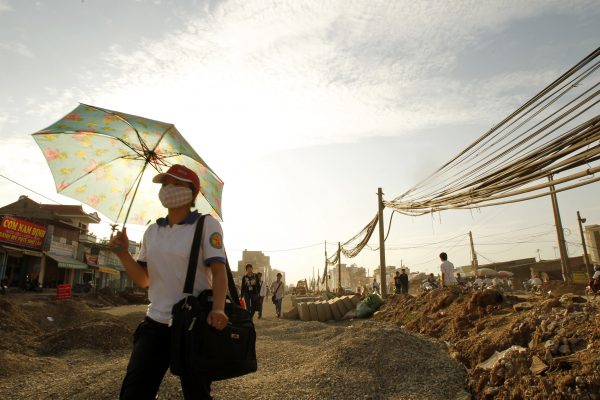Hedging is characterised by three contradicting yet complementary features — avoiding opposition against and dependence on a rising power, engaging in both deference and defiance with a threatening power, and diversifying relations with other major powers.
Vietnam’s strategy towards China’s BRI displays all three of these features of hedging. While Vietnam’s endorsement of the BRI shows its desire to avoid confrontation with China, Hanoi is cognisant of the risk of economic dependence on Beijing and the opacity of BRI projects. Vietnam has proactively constrained its engagement in this initiative.
The only BRI project implemented in Vietnam has been Chinese investment in the Cat Linh–Ha Dong tramline, which encountered condemnation due to its ballooning cost and stagnating progress. The project was signed in 2008 and was due to be completed in 2016. But it was not completed until the end of 2021 and the cost of the project suddenly rose from US$552.86 million to nearly US$11 billion in 2018.
Vietnam has also started distancing itself from China out of fear of falling into a Chinese ‘debt trap’ and because of intensifying tensions in the South China Sea. For example, Hanoi denied Chinese funding for the Van Don–Mong Cai highway due to national security concerns. The highway connects Van Don, which was set to be a specialised economic zone in 2018 with Mong Cai, a city near the border with China.
Similarly, the cancellation of the North–South railway, which would have connected Vietnam’s two largest cities, and the Hanoi–Lao Cai highway, which would have run from the capital to a province near China, were both due to fear that Chinese capital provision would be interrupted. And Vietnam has opted out of Huawei involvement in developing 5G telecommunications infrastructure due to concerns about threats from Chinese intelligence agencies, and has instead endeavoured to develop its own 5G model.
In its hedging approach to the BRI, Hanoi has also diversified its relations with other powerful states. Sovereignty disputes with China in the South China Sea have fostered a closer relationship between Hanoi and Tokyo, which was highlighted in 2014 by the two sides’ efforts to upgrade their relationship to an extensive strategic partnership, grounded on shared goals of peace and prosperity. Vietnam has welcomed Japan’s Partnership for Quality Infrastructure Investment more warmly than the BRI and has received substantial infrastructure investment from Tokyo.
Vietnam has even enhanced its relations with its previous foe, the United States, to restrict China’s attempts at broadening its influence in the region. Vietnam and the United States have boosted their bilateral economic ties and improved defence cooperation. Vietnam has also supported the United States’ Free and Open Indo-Pacific Strategy by welcoming US contribution to regional peace and stability. During the Trump administration, two US aircraft carriers visited Vietnam.
Vietnam’s hedging strategy towards the BRI could provide valuable lessons for other ASEAN states when dealing with a rising and more ambitious China. Vietnam has partially succeeded in fostering cooperation with other major powers instead of depending on an unreliable neighbour. Less developed countries like Laos, Cambodia and Myanmar which have actively engaged in the BRI should consider adopting such a strategy in order to avoid falling into a Chinese ‘debt trap’ or becoming ‘chess pieces’ in China’s geopolitical game.
Restricting economic dependence on China could also help to forge closer bonds among ASEAN members. China has weaponised its economic power to break ASEAN’s unity and ability to form consensus. This is exemplified by the increasing aid and investment that China provided to Cambodia after Phnom Penh blocked ASEAN’s joint statement on tensions in the South China Sea. Cambodia seems to be accepting political dependence on Beijing in return for economic development. During the time that it has undermined ASEAN consensus on the South China Sea problem, Cambodia has received numerous investments from China. In 2017, Cambodia’s bilateral loans totalled about US$5.3 billion, of which US$3.9 billion came from China, making it by far the largest debtor.
Vietnam’s hedging strategy is also a helpful model for more developed ASEAN countries like Singapore, Indonesia and the Philippines. If these states choose to bandwagon with or balance against China, they will limit the choices available to them in their relations with other powerful states.
Hedging is a better policy for countries in Southeast Asia. Like Vietnam, other states in the region should pursue a flexible and multilateral foreign policy and maintain a neutral posture towards China and its investments.
Viet Dung Trinh is a PhD Candidate at the University of Queensland.
Huy Hai Do is a student at Hanoi University.

